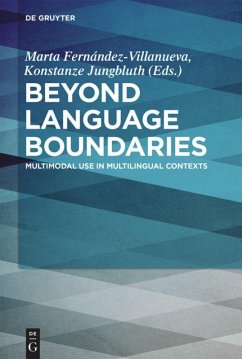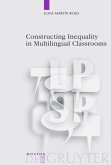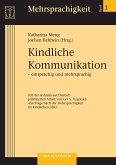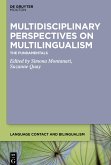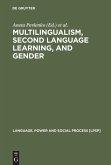The way speakers in multilingual contexts develop own varieties in their interactions sheds light on code switching and multimodal dynamic co-constructions of grammar in use. This volume explores the intersection of multimodality and language use of multilingual speakers.
Firstly, theoretical frames are discussed and empirical studies involving Catalan, German and Spanish as L1, L2 or FL are presented interconnecting verbal and gestural modalities into grammar description or exploring actions as sources for gestures, which may nonverbally represent the argument in German dynamic motion verbs. Other chapters focus on positionings in interviews, lexical access searches or proxemics in greetings and farewells.
The contributions secondly focus on verbal features of language use in multilingual contexts related to self-representation and co-construction of identity through code-switching, deixis or argumentative reasoning in different communicative events based on multilingual data of languages including Croatian, English, Italian, Brazilian-Portuguese and Polish.
The findings call for a reviewed conception of grammar description with implications also for the conceptualization of deixis, for L2/foreign language acquisition and language teaching policies.
Firstly, theoretical frames are discussed and empirical studies involving Catalan, German and Spanish as L1, L2 or FL are presented interconnecting verbal and gestural modalities into grammar description or exploring actions as sources for gestures, which may nonverbally represent the argument in German dynamic motion verbs. Other chapters focus on positionings in interviews, lexical access searches or proxemics in greetings and farewells.
The contributions secondly focus on verbal features of language use in multilingual contexts related to self-representation and co-construction of identity through code-switching, deixis or argumentative reasoning in different communicative events based on multilingual data of languages including Croatian, English, Italian, Brazilian-Portuguese and Polish.
The findings call for a reviewed conception of grammar description with implications also for the conceptualization of deixis, for L2/foreign language acquisition and language teaching policies.
"This book is a very good resource for how the traditional language limitations can be overcome in multilingual communities. The book integrates theoretical and empirical evidence from the different languages such as Catalan, Spanish, English, Croatian, German, Italian, Brazilian, Portuguese, and Polish as the first language, second language or foreign language. The findings obtained from the studies in the book necessitate considering a conception of grammar description with implications also relevant for the conceptualization of deixis, for second or foreign language learning and language teaching policies. An eye-catching advantage of this book is its division of theoretical and empirical evidence into different parts.[...] On the whole, for those interested in multimodal communication specifically in the multilingual European context, the book is a helpful resource providing a variety of language use forms in different contexts."
Sahar Ahmadpour in: LINGUIST List 29.596 https://linguistlist.org/issues/29/29-596.html
Sahar Ahmadpour in: LINGUIST List 29.596 https://linguistlist.org/issues/29/29-596.html

